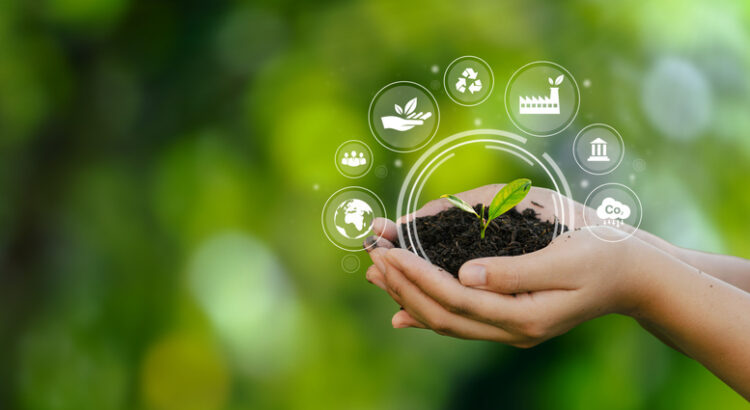Sustainability has become a defining priority for modern manufacturing. With rising energy costs, global climate commitments, and stricter environmental regulations, the pressure to reduce waste and optimize resources is greater than ever. Today, Information Technology sits at the centre of this transformation. Digital tools are enabling manufacturers to monitor energy consumption, reduce material waste, modernize processes, and build long-term eco-friendly systems. Through intelligent data, automation, and connected infrastructure, IT is shaping a new era of green manufacturing where sustainability naturally aligns with profitability.
1. Real-Time Energy Monitoring for Smarter Consumption
Traditional factories relied on manual logs and periodic audits to track energy usage, which often led to reactive and delayed decisions. Modern IoT sensors and smart meters now provide real-time insights into electricity, fuel, water, steam, and machine-level consumption. Manufacturers can immediately detect irregularities, identify energy-heavy equipment, and reduce unnecessary load. Combined with analytics dashboards, these systems highlight trends like peak usage hours, standby power wastage, and seasonal variations. This real-time visibility empowers factories to optimize scheduling, shut down idle systems, and adopt energy-efficient practices with precision.
2. AI-Based Energy Optimization and Predictive Forecasting
AI has become a powerful ally in the drive toward sustainability. Predictive models analyze historical energy patterns to forecast future demand, enabling manufacturers to balance loads, shift operations to off-peak hours, and avoid high-consumption periods. AI also identifies equipment that consumes more power over time due to wear and tear, allowing timely intervention. By providing automated recommendations-such as adjusting temperature settings, optimizing machine cycles, or modifying load distribution-AI ensures that energy is used efficiently, reducing both cost and carbon footprint.
3. Minimizing Material Waste Through Digital Twins and Automation
Waste reduction is one of the biggest sustainability challenges in manufacturing. Digital twins solve this by creating virtual replicas of machines, products, or full production lines. Manufacturers can simulate processes, test new setups, and optimize workflows without using real materials. This reduces trial-and-error waste significantly. Automation further improves material efficiency by ensuring consistent quality, reducing errors, and minimizing rework. With robotic precision, automated systems avoid defects that often lead to large-scale scrap, contributing directly to a more sustainable production model.
4. Smarter Quality Control With Machine Vision and AI
Quality control is no longer a manual, error-prone step. AI-powered vision systems now inspect products at high speed and with microscopic accuracy. These systems detect defects in real time-such as cracks, mismatches, color variations, or structural inconsistencies-before the issues progress further down the production line. This early detection reduces defective batches, avoids material wastage, and maintains consistency. Machine learning models also identify recurring defect patterns, enabling manufacturers to fix root causes and create long-term quality improvements.
5. Cloud-Based Infrastructure for Low-Carbon IT Operations
Sustainability isn’t only about what happens on the factory floor. IT infrastructure itself contributes to the environmental footprint. Moving to cloud platforms dramatically reduces the need for heavy on-premise servers, cooling systems, and hardware maintenance-all of which consume energy. Cloud ecosystems store data efficiently, support remote monitoring, and allow seamless integration of new sustainability tools without additional physical resources. This shift to cloud not only cuts carbon emissions but also ensures real-time coordination between global teams, improving decision-making and reducing operational delays.
6. Automated ESG Reporting and Sustainability Compliance
Environmental, Social, and Governance (ESG) compliance is now a global requirement. Companies must report emissions, energy use, waste generation, water consumption, and sustainability initiatives with accuracy. IT systems simplify this process by automating data collection and generating real-time ESG dashboards. Instead of spending days compiling spreadsheets, manufacturers can instantly view their environmental performance metrics. Automated reporting also reduces human error and supports transparency, helping organizations stay compliant with government policies and customer expectations. These insights help companies set realistic targets and monitor progress year-round.
Together, these digital advancements are reshaping manufacturing into a more intelligent, eco-conscious, and resource-efficient industry. Green manufacturing is no longer limited to isolated initiatives-it is becoming an integrated, measurable, and continuous part of modern operations. Factories of the future will rely heavily on data, automation, and connected systems to maintain sustainability as a core business outcome rather than an optional responsibility.
At Razorse Software, we empower manufacturers to accelerate this transformation with advanced digital solutions tailored for sustainable operations. Our expertise in IoT-based monitoring, predictive analytics, cloud platforms, automation, and ESG reporting tools helps organizations build greener, smarter, and more efficient production environments. With Razorse, companies can reduce energy costs, eliminate unnecessary waste, streamline operations, and achieve long-term sustainability goals without compromising performance. By integrating the right digital technologies at the right scale, Razorse enables manufacturers to move confidently toward a future where sustainability and operational excellence go hand in hand.
#Sustainability #GreenManufacturing #DigitalTransformation #Industry40 #SmartFactories #EnergyEfficiency #WasteReduction #SustainableTech #ManufacturingInnovation #CleanTech #IoTInManufacturing #AIForSustainability #RazorseSoftware #GreenIT #ESGReporting #FutureOfManufacturing #EcoFriendlyTech #SustainableOperations #AutomationSolutions #CloudTransformation





